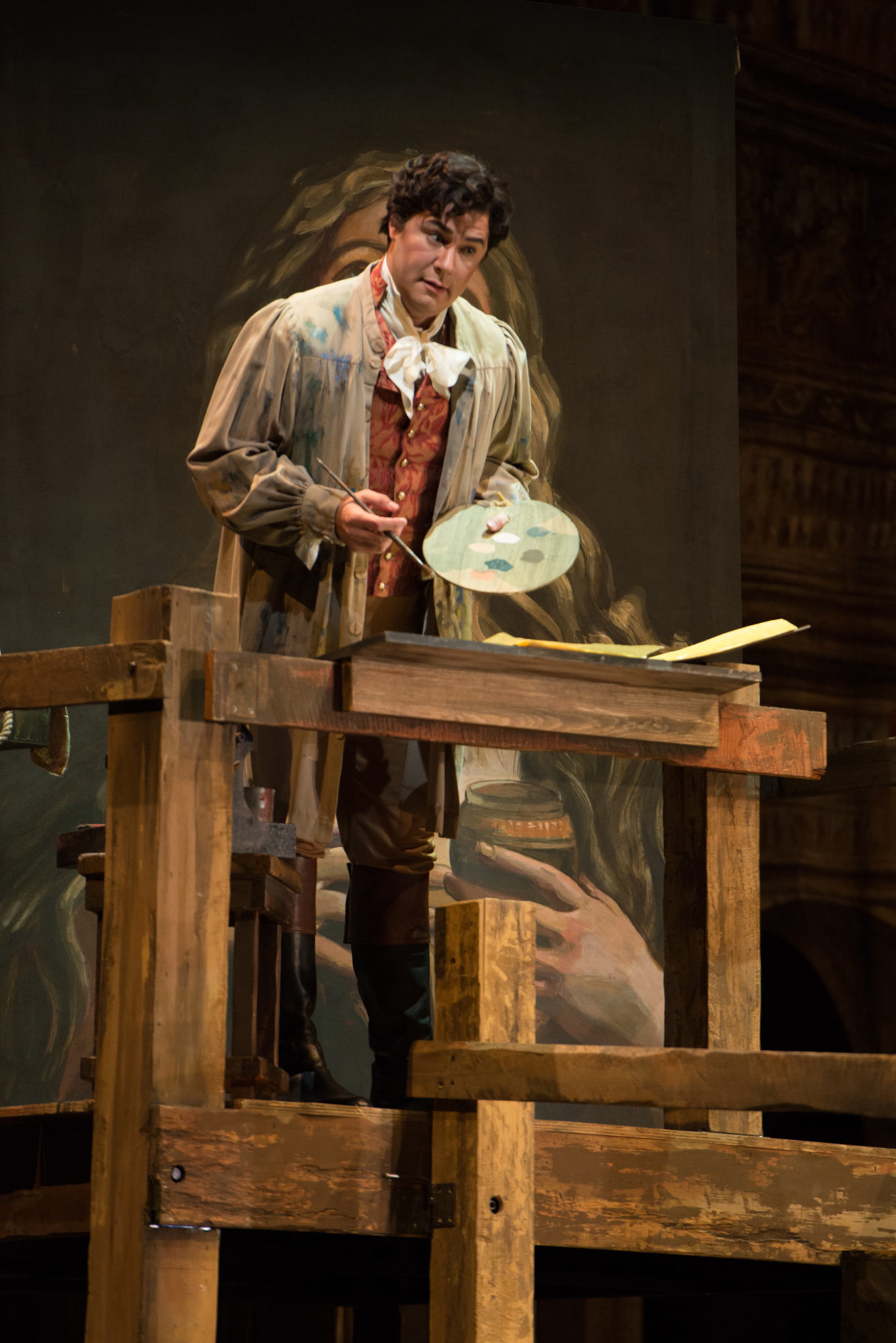
Adam Diegel (Mario Cavaradossi) in Tosca. © Elise Bakketun photo
Things so often disappoint in direct proportion to how highly anticipated they are. The Blarney Stone is a tourist trap; the Mannekin Pis is only a foot tall. That movie everyone raved about has a plot like Swiss cheese. Cheese from Switzerland – not really sweeter than cheese at home. But every now and then, a classic delivers everything promised. Like Tosca at Seattle Opera.
All That
Few operas promise everything. The music may be beautiful but the plot incoherent. Or the story is powerful, but the music dull. Gorgeous sets may be offset by weak performances – you get the idea. It seems too much to ask for beautiful music, rich characters, meaningful story, shining performances, and perfect sets. Tosca is all that. And a bag of chips.
Music
It sounds strange, but I have to admit I rarely notice the music in opera. The voices, yes. But in the midst of so much visual spectacle, the music becomes a backdrop. In Tosca, though, I never forgot the orchestra. The music was so beautiful, so perfectly expressive and complementary to the singers that every aria felt like a duet between the singer and the musicians. The arias themselves are short, exquisite expressions of emotion. They punctuate the dramatic tension rather than suspending it. The story is tight, with cinematic pacing that never drags but hurtles towards its tragic end. So many operas have such flimsy plots that they can be completely reimagined with a costume change. Tosca is pointedly specific in its time and place. But the characters – oh the characters!
Characters
In interviews, performers often talk about the depth of their character making me think, “How imaginative, finding a three dimensional figure in that cardboard cutout.” In Tosca, from the quick outline sketches of peasants who confuse politics and religion to the deliciously evil villain Scarpia, everyone has strengths and weaknesses.
Scarpia’s depth includes none of the humanizing qualities popular in modern villains. He is all the more menacing because he is completely remorseless in his quest for power with a side of sadism. His unironic veneer of piousness simultaneously thrills and sickens. Has there ever been a more perfect portrayal of evil than Scarpia’s bass-baritone plotting rape and murder in the middle of mass? Yet that mass is being held to celebrate a war victory. In a world where religion is perverted for political ends, how far off the moral scale is Scarpia, really?
The opera is named Tosca for a reason. In an art form where even the best females are (metaphorically) one-note characters, Floria Tosca is the Romantic-era epitome of a brilliant artist. She is petty, passionate, insecure, and ruled by her emotions. Yet she is possessed of hidden determination, courage, and loyalty that emerge under pressure. The success of a production of Tosca rests heavily on the shoulders of the soprano. Because I got to see both casts this time, I want to say more on the performers in a later post, but I think you can guess I wasn’t disappointed.
Sets
Sometimes I feel silly commenting on the sets – like describing the cup holders in a sports car review – but Seattle Opera’s sets are always notable. In this case, the sets date back to the 1960s. The flat wooden panels were gorgeously painted to resemble three-dimensional architecture using a technique that no one really knows how to replicate today.

Stefano Secco (Mario Cavaradossi) and AusrineStundyte (Floria Tosca) in Puccini’s Tosca. © Elise Bakketun
How Good Was It?
I admit it. I’m gushing; I sound more like a promoter than a critic. But sometimes things get famous for a reason. Tosca is just that good.
All photos provided courtesy of Seattle Opera.






About the author